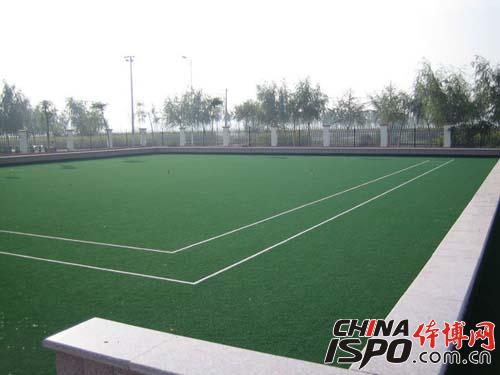I. Gate Stadium Ground Floor Material Specifications
The ground floor material of the gateball court can be made of materials such as triads, sandy soils, etc., but all have mud on the surface after encountering water, and will dust when the weather is dry. This item does not meet the environmental protection requirements. Recently came a sports venue engineering company in Beijing. Researched and developed a kind of artificial synthetic soil for the gateball field, which mainly meets the athletes' competition needs, and can not afford dust in the wind, sticks to the feet after the rain, and does not grow weeds normally. The basic knotboard after the ground is rolled, Not loose, once used in the construction of a venue for old cadres in a central department in Beijing, and received favorable comments.

This kind of soil is made into a cube after the silty soil is mixed with water. After high-temperature sintering, it is mixed with a small amount of red clay soil, broken by a crusher, and sieved through 5 minutes to form fine-grained soil. Before the construction, it is necessary to incorporate curing agents, salt additives, etc., use a forced mixer, stir it well, and bag it into the site. This soil plasticity index is 10~12, the maximum dry bulk density is between 1.7~1.8, and the optimum moisture content is controlled between 9.5%~11.5%. There is no impurity in the soil and the construction is convenient.
The use of this kind of soil in engineering requires that the structural thickness should not be less than 10cm. Because this type of material is a knot-type seepage material, as long as the surface of the site is well drained and the flatness is acceptable, it will not be loose and mudified. And do not fade, do not dye clothes.
II. Construction Methods for Gateball Field
The gateball field is a rectangular field. Each site is surrounded by a 1m wide active area, also known as the restricted sideline. Therefore, a 0.5m construction slotted boundary should be extended beyond the limit line in order to guarantee the site's performance. Integrity, and integrity of the perimeter after construction.
Earthwork construction: All sites shall be excavated simultaneously or filled at the same time to achieve uniform construction operations, overall leveling and rolling
Basic construction: After the foundation is completed, the heavy roller is used for roller compaction and the density is controlled at 90% (heavy compaction). In the event of tumbling or loose soil, it is best to use a method of changing the dry soil, so that the basis is consistent, do not fill the aggregate processing.
Grass-roots construction: The grass-roots materials for the gateball field can be sand-gravel grass-roots, which facilitates surface water seepage. For the construction of sand and gravel bases, a 5mx5m square grid measurement method shall be used to control the elevation and flatness of the site, and the virtual thickness for gravel paving shall be 1.25~1.30 (for artificial paving) or 1.20~1.25 (for mechanical paving); After the shop is covered with water and soaked, then use the roller to grind 1 or 2 times to perform a full leveling and leveling work. At the same time, concentrate the gravel or sand bags, etc., and then continue rolling until the surface of the roller wheel is less than 5mm. until. The final test compaction density, the allowable deviation is greater than 2.3t/m3, the surface may not have soft, Froth phenomenon.
Surface construction: The surface layer of sintered soil is bagged material, and it is unloaded on the site evenly according to the thickness of the paving. The bag is dismantled and scattered, and the initial leveling is performed. The measurement method of 5mx5m square grid is used to control the elevation and take a high fill. After the leveling, wet the structural layer. After the surface is air-dried, it can be rolled with a light roller for 1 or 2 times to stop the roller compaction, and trimming and leveling inspections can be used to check whether there is any phenomenon such as slushing or loosening. Do a thorough solution. Finally, roller compaction with a heavy roller until the surface of the roller roller track is less than 5mm, and finally the test density of compaction reaches more than 90% of the optimal density (heavy-duty compaction).
Finishing: After qualified rolling, use less than 5mm of sinter, spread on the surface layer, the average amount of thickness is not more than 3mm, use a bamboo broom, gently sweep diffuse evenly.
Guangzhou Ruixin Touch Control Technology Co., Ltd. , https://www.smartpaneltv.nl